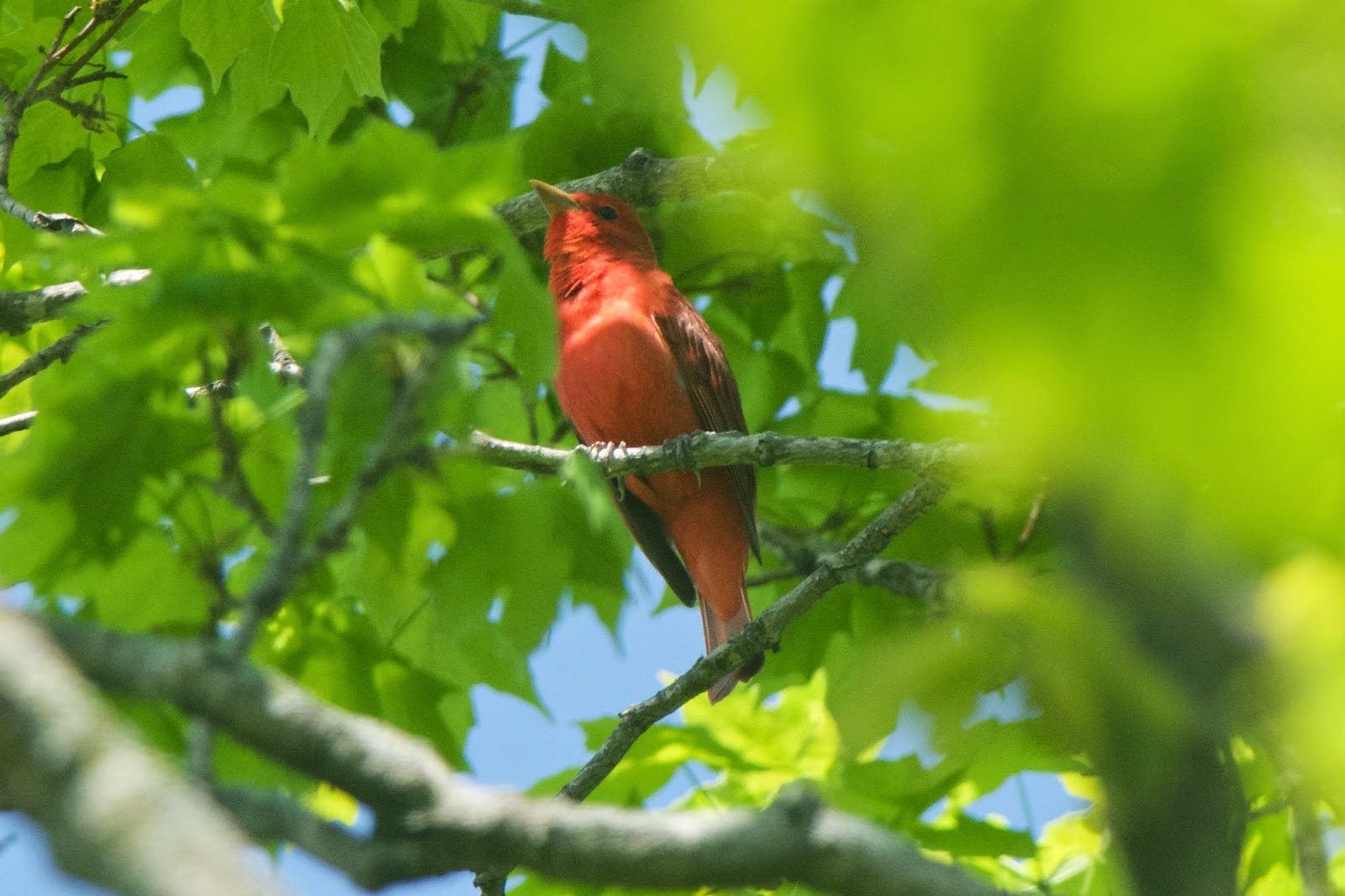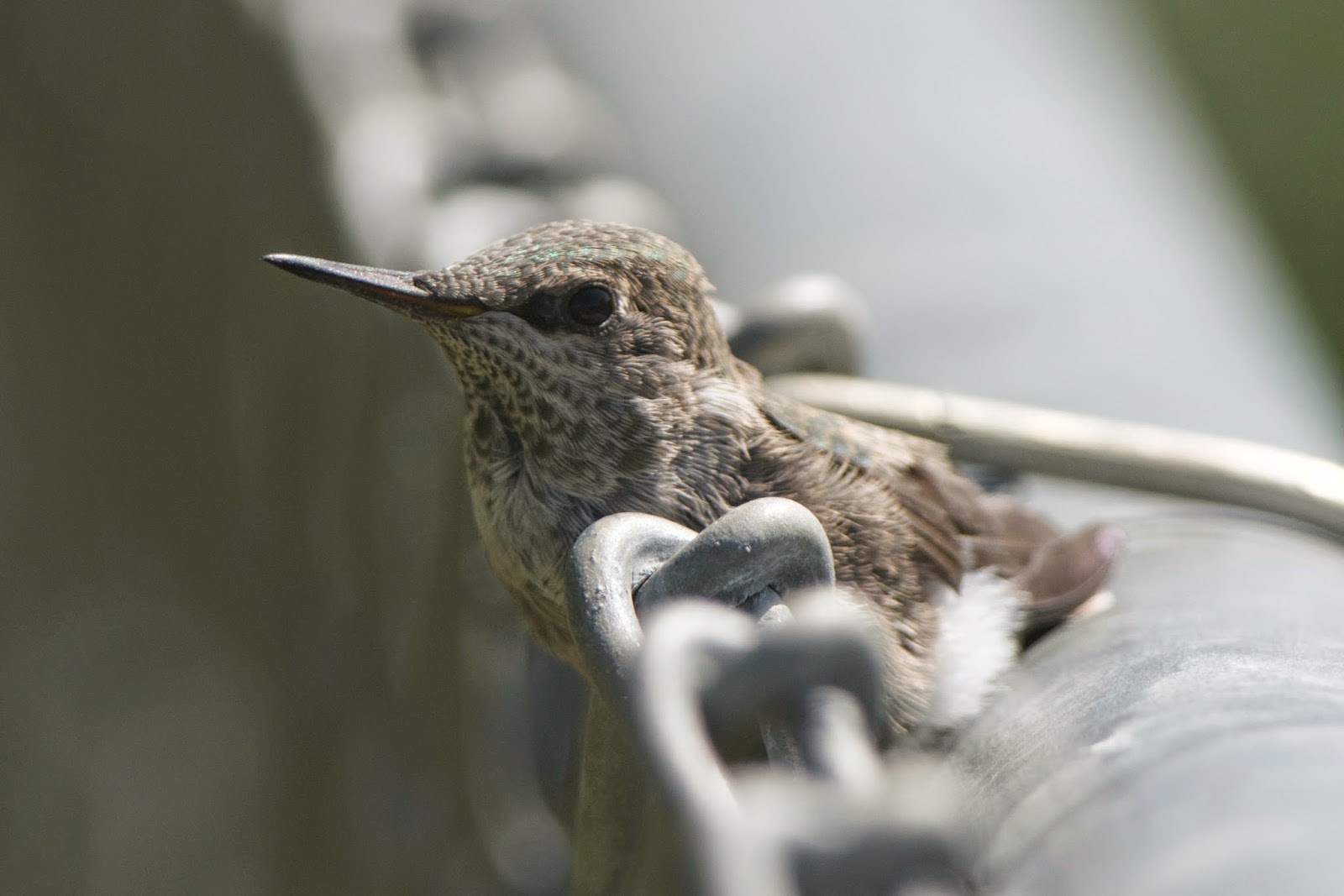Indeed, spring has done just that. The warm days that border on hot, the fully-leafed-out woods, it's a really pleasant time to bird the Central Valley.
As one would expect, I've continued to bird local patches of mine, at least ones I can walk to. Front and center on that short list is Don Nottoli Park just to my south.
It goes without saying that if you're out and about these days, you'll see that Say's Phoebes have moved out and WESTERN KINGBIRDS are ubiquitous once more:
Although I've fully grown accustomed to these yellow-and-gray kingbirds, I still wonder if deep down my default is still their black-and-white counterparts of the east. No matter, no matter; these will do for now:
In the summer, it's not uncommon to see 5-7 different species of herons around here. One of those is certainly the familiar GREAT BLUE HERON, especially considering there is a nesting rookery about a mile away:
Less obvious is the often overlooked GREEN HERON. This smaller cousin of the above bird posed nicely in some morning light at a nearby lake:
It's not a stellar picture but CACKLING GEESE are now flagged in eBird; it's high time for them to be north of here by now. I found these two lingering in a grazed portion of Stone Lakes NWR:
A common bird that is NOT flagged is the COMMON YELLOWTHROAT, a familiar denizen of marshes through much of the US. Although, yes, it has a yellow throat, the distinctive male dons a black face mask. It's a wonder this species wasn't named Masked Marsh Warbler or something:
On a recent visit to my LOPA, I also stumbled on my first empid of the spring, this PACIFIC-SLOPE FLYCATCHER:
Fieldmarks include fairly yellowish below, greenish above, tear-drop shaped eyering, completely yellow lower mandible, fairly short primary projection, somewhat crested appearance, etc. The PSFL is also the most-expected empid to be seen at this local patch and especially early in the season like this. Later in the spring we might get empids like HAMMOND'S, WILLOW, or even a GRAY FLYCATCHER. Time will tell.
I was birding an open (and generally not birdy) part of the park the other day when I heard a TRICOLORED BLACKBIRD singing somewhere. I definitely wanted to track the source down, I had only seen TRBL once at this park before and that was mixed in with a large blackbird flock way out in the grasslands. But this time it sounded like it was coming from one of the baseball diamonds! I tracked it down to this guy sitting up in a solo tree, not even close to a marsh:
Sure enough, it looks like a young male. You can see some white starting to emerge on the median coverts. From a different angle, you can see the oober-slender and sharp bill:
Anyway, with the weekend here and with new year birds waiting for us at various spots across the county, we ventured out several times and ended up tapping into some fortuitous luck. We first headed out to Meiss Road on Friday night to take a look around. We got there with an hour or two of remaining light so we ventured to the east end where GRASSHOPPER SPARROWS breed. Sure enough, about 1.6 miles west from Ione Road, we had this bird north of the road:
As we ventured farther to the west as the light faded, we came upon a pair of BURROWING OWLS out on their porch enjoying the sunset (one would have to assume). We paused to receive some evil stink-eye from one of them:
The real treat came at sunset when the LESSER NIGHTHAWKS started wafting through the fading light. This is probably the most reliable spot in Sacramento County to see this uncommon species although we were the first to see them there this spring. We counted 8 at once which was flagged in eBird; most sightings include 1-5 birds. Here's two of the closer ones:
The following day we returned to the foothills and managed to keep our good luck rolling. On Latrobe Road we found a flock of 5 (!) CHIPPING SPARROWS; the most either one of us had ever seen in the county. Although even one of these would be flagged here, we must have tapped into a bit of a migrating flock. Here's one that perched up:
We kept our eyes open for another rare but annual sparrow, Brewer's. No luck, just loads of SAVANNAH SPARROWS such as this one:
Another species that we had in mind was Lawrence's Goldfinch... but we could only find their favorite food source, not the bird itself. This is Fiddleneck (genus Amsinckia):
We visited our main local patch, Don Nottoli Park, again in hopes of maybe relocating the Pacific-slope Flycatcher. Instead, a "creamy" smooth warbling song caught my attention. Then it called... no doubt, we had a grosbeak singing somewhere in the broadleaf trees. We eventually tracked down this very early BLACK-HEADED GROSBEAK:
I believe that BHGR is the 2nd earliest record ever for Sacramento County (at least in eBird). While on the topic of early passerines, we also found this flagged WILSON'S WARBLER at Cosumnes yesterday. It's not a great picture, for sure, but I strive to document every flagged sighting I can:
Even birding from the apartment has been fruitful as of late. Besides the now-common SWAINSON'S HAWKS that filter north on spring winds just about every day, the hummingbird feeder has seen a level of activity that usually borders on frantic. I've been surprised to see them consume about a cup of sugar water every day which is far more than other times of the year here. The main culprits in this act of welcomed feeder thievery are the year-round ANNA'S HUMMINGBIRDS, such as this male that peeked around the feeder one morning:
However, the last week has yielded 4 different species which is another sure sign of spring. They were:
Anna's Hummingbird
Rufous Hummingbird
Black-chinned Hummingbird
Calliope Hummingbird
The BLACK-CHINNED just arrived yesterday but that species will breed locally and I expect they'll be normal visitors from here on out. The CALLIOPE was a brief visit by a male but this species has proven to be annual at my feeders during the spring. The RUFOUS HUMMINGBIRDS are almost daily visitors and will be around through sometime in May when they finally will trickle northward out of the valley.
With that, I'm now sitting in the 190s for the county this year. I'll be happy if I can make it to 200 before we depart for good. Cheers.


































































